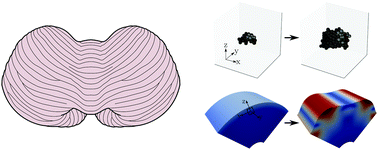Understanding the mechanical link between oriented cell division and cerebellar morphogenesis
Abstract
The cerebellum is a tightly folded structure located at the back of the head. Unlike the folds of the cerebrum, the folds of the cerebellum are aligned such that the external surface appears to be covered in parallel grooves. Experiments have shown that anchoring center initiation drives cerebellar foliation. However, the mechanism guiding the location of these anchoring centers, and subsequently cerebellar morphology, remains poorly understood. In particular, there is no definitive mechanistic explanation for the preferential emergence of parallel folds instead of an irregular folding pattern like in the cerebral cortex. Here we use mechanical modeling on the cellular and tissue scales to show that the oriented granule cell division observed in the experimental setting leads to the characteristic parallel folding pattern of the cerebellum. Specifically, we propose an agent-based model of cell clones, a strategy for propagating information from our in silico cell clones to the tissue scale, and an analytical solution backed by numerical results to understand how differential growth between the cerebellar layers drives geometric instability in three dimensional space on the tissue scale. This proposed mechanical model provides further insight into the process of anchoring center initiation and establishes a framework for future multiscale mechanical analysis of developing organs.



 Please wait while we load your content...
Please wait while we load your content...
